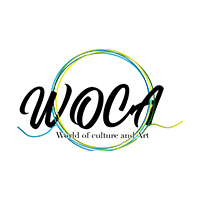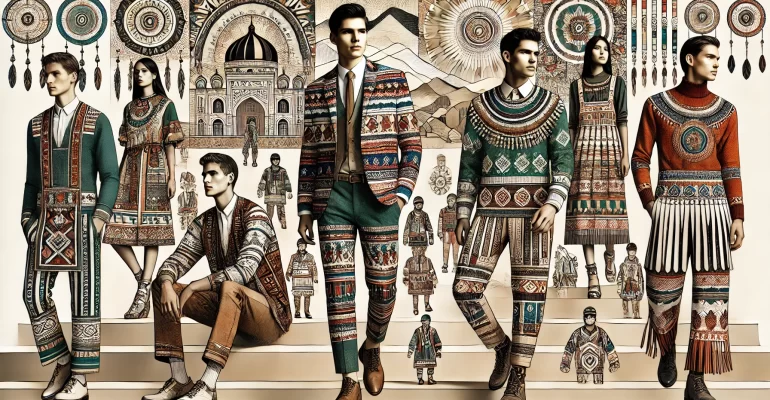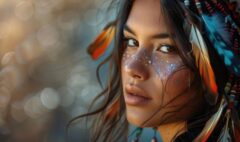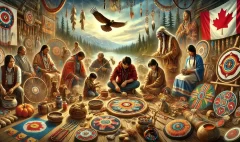How Traditional Indigenous Clothing and Designs Influence Contemporary Fashion
How Traditional Indigenous Clothing and Designs Influence Contemporary Fashion
Traditional Indigenous clothing and designs have significantly influenced contemporary fashion, blending cultural heritage with modern aesthetics. This fusion has resulted in unique and innovative styles that honor Indigenous traditions while appealing to a global audience. Here are several ways in which traditional Indigenous clothing and designs influence contemporary fashion:
Cultural Symbols and Patterns
Traditional Indigenous Clothing and Designs feature motifs and symbols with deep cultural significance, such as geometric patterns, animal motifs, and nature-inspired designs. These elements are now being incorporated into contemporary fashion, infusing modern designs with rich layers of meaning and storytelling.
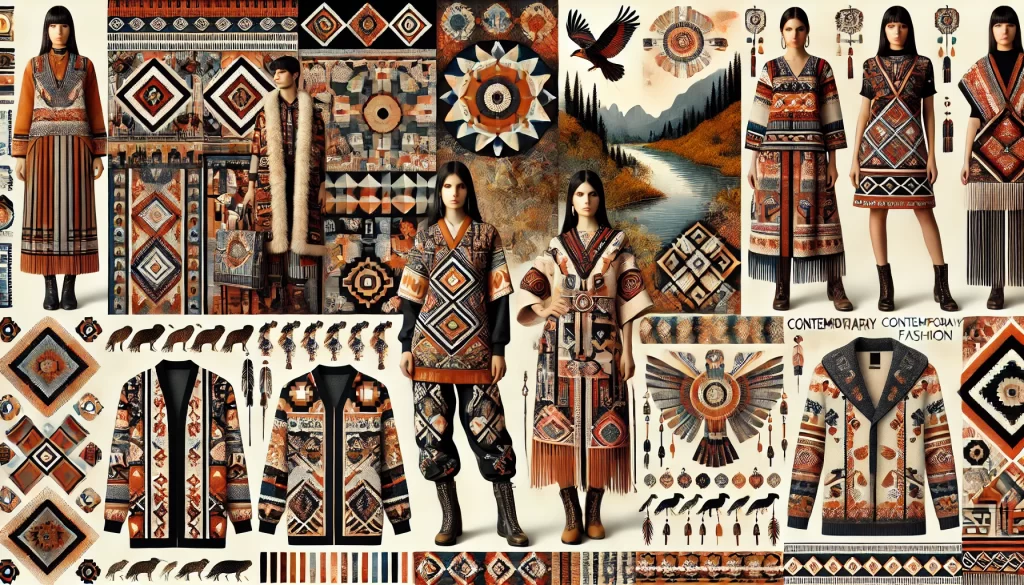
Incorporation of Symbolism
- Motifs and Symbols: Traditional Indigenous clothing often features motifs and symbols that carry deep cultural significance. These elements are being incorporated into contemporary fashion, adding layers of meaning and storytelling to modern designs. For instance, geometric patterns, animal motifs, and nature-inspired designs from various Indigenous cultures are now seen on mainstream clothing and accessories.
Techniques and Craftsmanship
Traditional Indigenous Clothing and Designs are experiencing a revival in contemporary fashion through techniques such as beadwork, embroidery, quillwork, weaving, and dyeing. Designers use these traditional methods to create intricate embellishments and unique fabrics, celebrating the artistry and craftsmanship of Indigenous cultures.
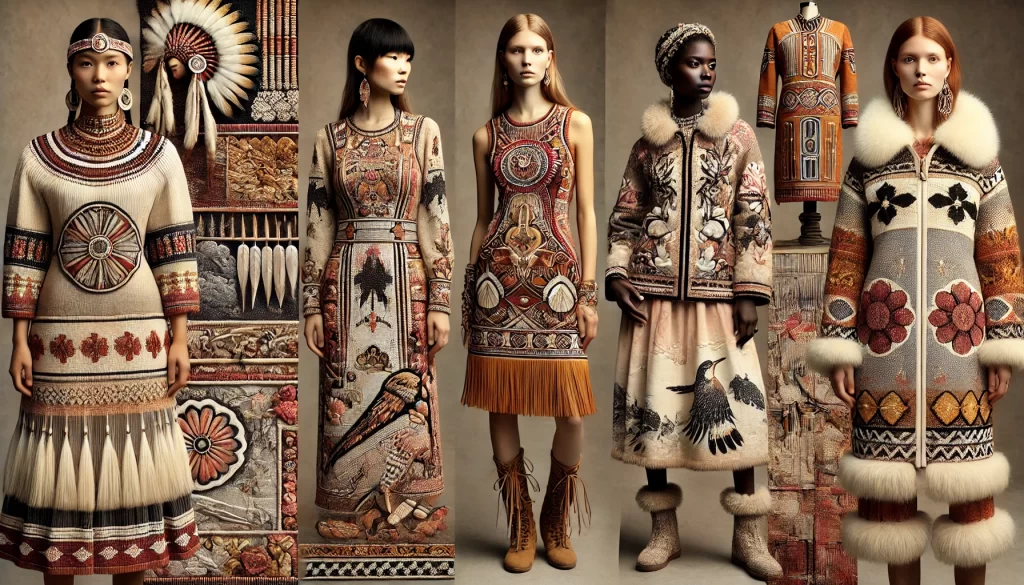
Revival of Traditional Techniques
- Beadwork and Embroidery: Techniques such as beadwork, embroidery, and quillwork, which are integral to many Indigenous cultures, are being revived in contemporary fashion. Designers use these traditional methods to create intricate and detailed embellishments on modern garments, celebrating the craftsmanship and artistry of Indigenous peoples.
- Weaving and Dyeing: Indigenous weaving and dyeing techniques, known for their complexity and beauty, are also influencing modern textile design. Contemporary fashion designers are adopting these methods to create unique fabrics and textures.
Sustainable Fashion
Traditional Indigenous Clothing and Designs emphasize sustainability through the use of natural materials like cotton, wool, leather, and plant-based dyes. This eco-friendly approach is influencing contemporary fashion, with designers adopting sustainable production methods and ethical practices inspired by Indigenous cultures.
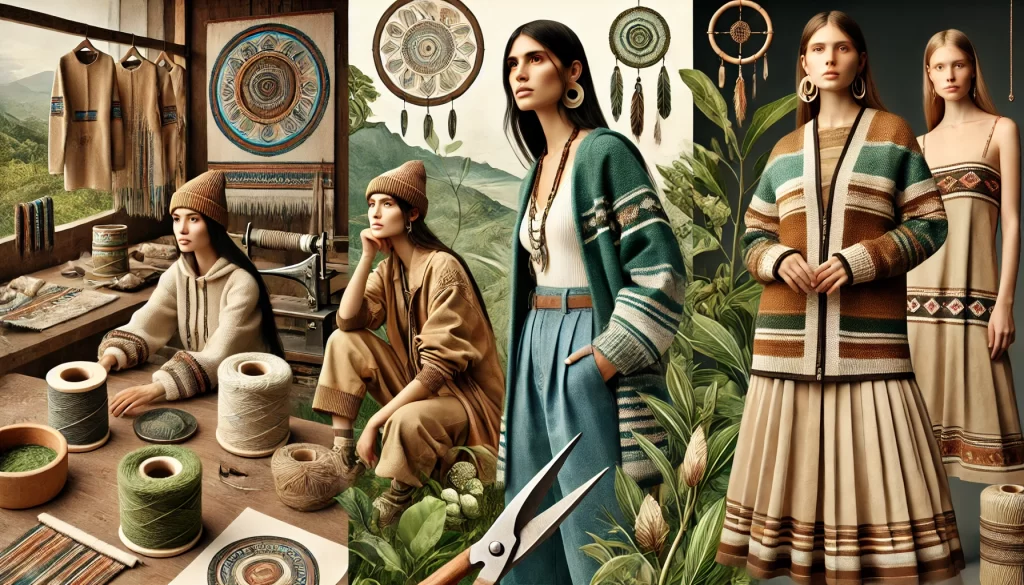
Emphasis on Sustainability
- Natural Materials: Indigenous clothing traditionally uses natural materials like cotton, wool, leather, and plant-based dyes. This emphasis on sustainability is influencing contemporary fashion’s shift towards eco-friendly practices. Designers are increasingly valuing and incorporating natural materials and sustainable production methods inspired by Indigenous practices.
- Ethical Production: The focus on ethical production and respect for the environment, central to many Indigenous cultures, is gaining traction in the fashion industry. This influence is leading to more socially responsible and environmentally conscious fashion practices.
Collaboration and Representation
Collaborations between Indigenous artisans and contemporary fashion designers are blending traditional Indigenous designs with modern fashion, creating authentic and respectful collections. Indigenous fashion shows and exhibitions showcase these works, highlighting the influence of traditional designs on contemporary fashion and celebrating the contributions of Indigenous designers.
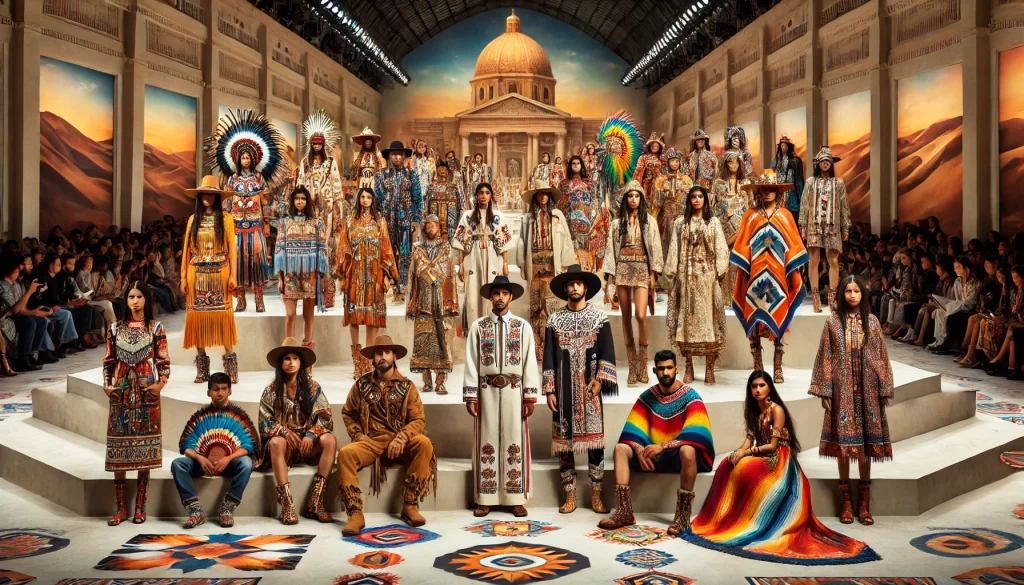
Collaborative Projects
- Designer Collaborations: Collaborations between Indigenous artisans and contemporary fashion designers are becoming more common. These partnerships allow for the creation of collections that blend traditional Indigenous designs with modern fashion, bringing authenticity and respect to the integration of Indigenous art into contemporary contexts.
- Fashion Shows and Exhibitions: Indigenous fashion shows and exhibitions provide platforms for Indigenous designers to showcase their work to a broader audience. These events highlight the influence of traditional designs on contemporary fashion and celebrate the contributions of Indigenous designers.
Cultural Appropriation vs. Appreciation
Contemporary fashion is becoming more aware of the difference between cultural appropriation and appreciation, striving to honor Indigenous cultures through proper representation and involvement of Indigenous designers. Advocacy and education by Indigenous designers are promoting ethical practices and respectful representation in the fashion industry.
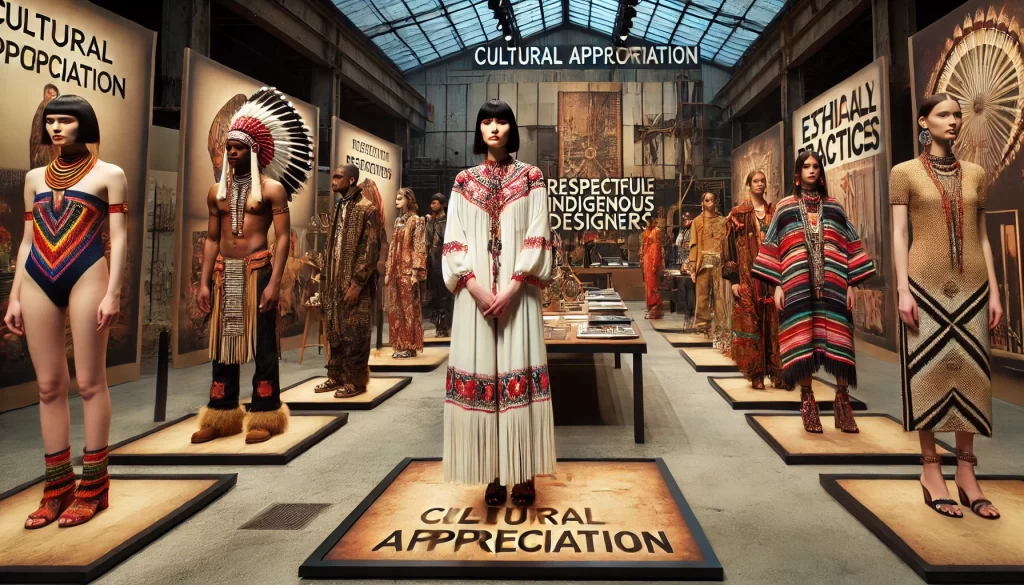
Respectful Representation
- Awareness and Education: There is a growing awareness of the difference between cultural appropriation and cultural appreciation. Contemporary fashion is increasingly striving to respect and honor Indigenous cultures by ensuring proper representation and involvement of Indigenous designers and communities in the creation process.
- Advocacy and Ethics: Indigenous designers and advocates are playing a crucial role in educating the fashion industry about the importance of ethical practices and respectful representation. This advocacy is helping to create a fashion landscape that values and respects Indigenous contributions.
Contemporary Examples
Influential Indigenous designers are making significant impacts on modern fashion. Jamie Okuma is renowned for her intricate beadwork and blend of traditional and contemporary designs. Bethany Yellowtail honors her Crow and Northern Cheyenne heritage in her globally appealing pieces. Korina Emmerich, founder of EMME, uses vibrant colors and patterns inspired by her Indigenous heritage to celebrate cultural identity.
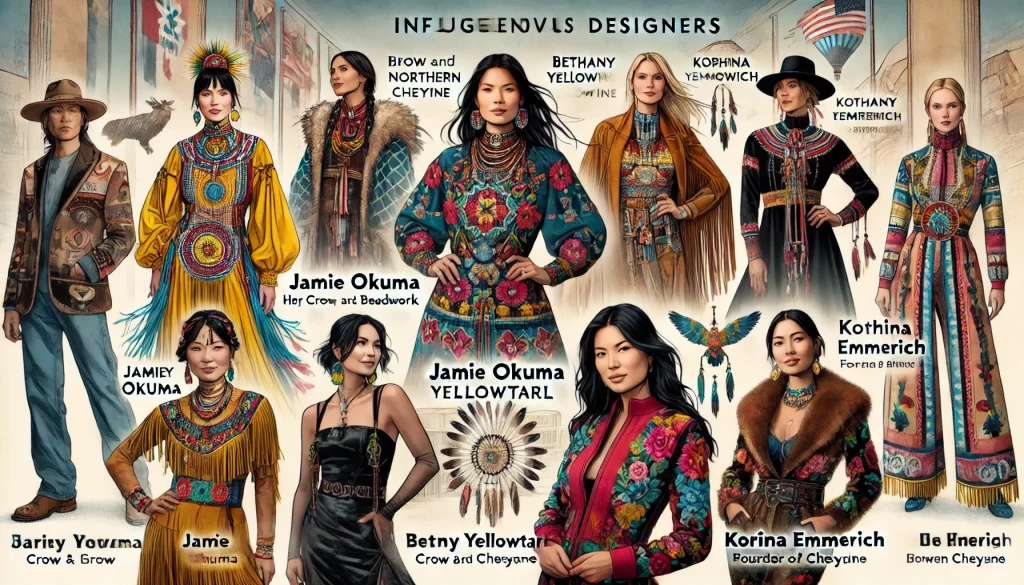
Influential Indigenous Designers
- Jamie Okuma: Known for her intricate beadwork and incorporation of traditional designs into contemporary pieces, Jamie Okuma has made a significant impact on modern fashion with her unique blend of traditional and modern elements.
- Bethany Yellowtail: A designer who blends her Crow and Northern Cheyenne heritage with contemporary fashion, Bethany Yellowtail creates pieces that honor her cultural roots while appealing to a global audience.
- Korina Emmerich: Founder of the fashion brand EMME, Korina Emmerich uses vibrant colors and patterns inspired by her Indigenous heritage to create contemporary designs that celebrate her cultural identity.
Latest News and Contributions to Indigenous Fashion
Recent highlights in Indigenous fashion include the 2022 Indigenous Fashion Week Toronto, which showcased sustainable collections emphasizing cultural heritage. The Métis Nation of Alberta launched a 2023 fashion initiative supporting Métis designers globally. Australia’s First Nations Fashion + Design announced a mentorship program for emerging designers. The rise of virtual fashion shows during the COVID-19 pandemic has enabled Indigenous designers to reach a global audience, promoting their work despite travel restrictions.
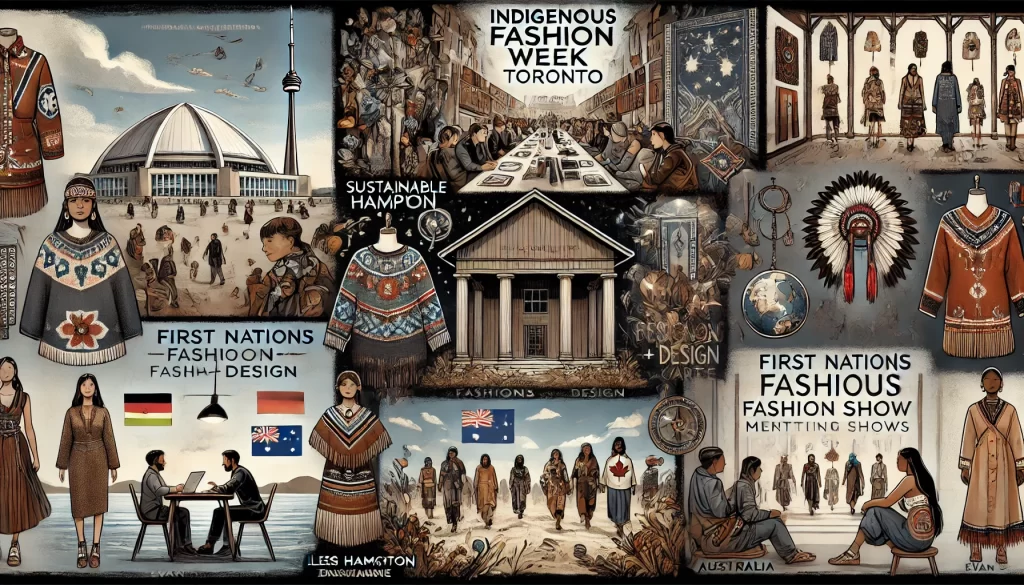
Recent Developments and Highlights
- Indigenous Fashion Week Toronto (IFWTO): The latest IFWTO, held in 2022, showcased groundbreaking collections from Indigenous designers, emphasizing sustainability and cultural heritage. Designers like Lesley Hampton and Evan Ducharme presented collections that highlighted Indigenous issues and celebrated their heritage.
- Métis Nation Launches Fashion Initiative: In 2023, the Métis Nation of Alberta launched a fashion initiative aimed at supporting Métis designers and promoting their work globally. This initiative includes grants, workshops, and international showcases to elevate Métis fashion.
- First Nations Fashion + Design (FNFD): FNFD, an Australian organization supporting Indigenous fashion, recently announced a new program to mentor emerging Indigenous designers. This program aims to provide resources and platforms for these designers to gain recognition and grow their brands.
- Rise of Virtual Fashion Shows: Due to the COVID-19 pandemic, many Indigenous fashion shows have moved online. Virtual fashion shows have allowed designers to reach a global audience and continue sharing their work despite travel restrictions. The virtual format has proven to be an effective way to promote Indigenous fashion and engage with a broader audience.
Global Recognition and Awards
Indigenous Australian model Samantha Harris continues to break barriers, recently featuring in Vogue Australia’s cover story on diversity in fashion. Ojibwe fashion writer Christian Allaire, a Vogue editor, released “The Power of Style” in 2021, advocating for Indigenous representation and showcasing how fashion can be a powerful tool for cultural expression.
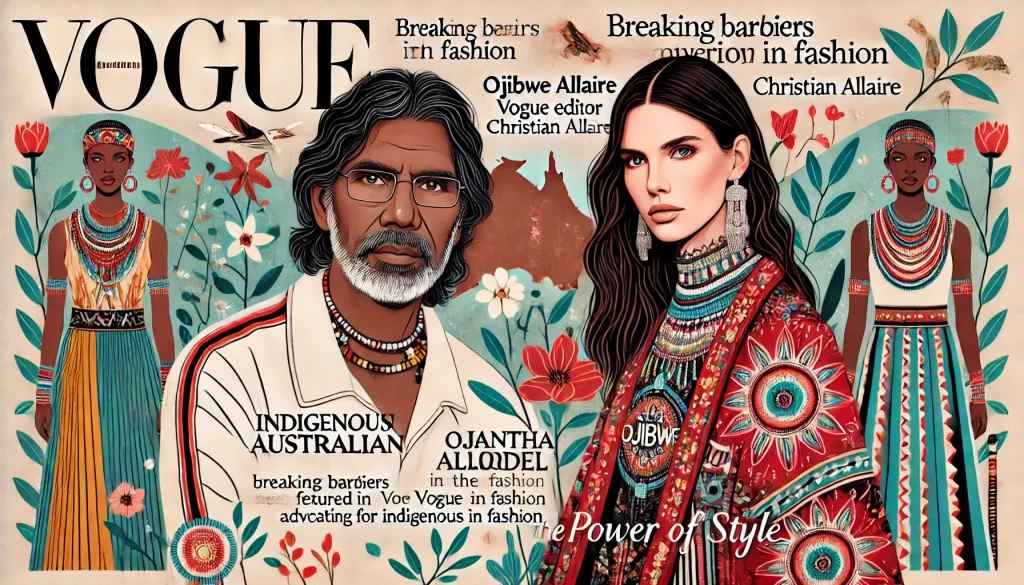
- Samantha Harris: An Indigenous Australian model, Samantha Harris, continues to break barriers in the fashion industry, recently being featured in Vogue Australia’s cover story on diversity in fashion.
- Christian Allaire: An Ojibwe fashion writer and editor for Vogue, Christian Allaire, released his book “The Power of Style: How Fashion and Beauty Are Being Used to Reclaim Cultures” in 2021. His work advocates for Indigenous representation in fashion and highlights how style can be a powerful tool for cultural expression.
Indigenous Fashion Festivals and Events Worldwide
Traditional Indigenous Clothing and Designs are celebrated throughout the year across various regions, highlighting the creativity and cultural heritage of Indigenous designers. Here is a list of notable Indigenous fashion events worldwide, including their typical dates and locations:
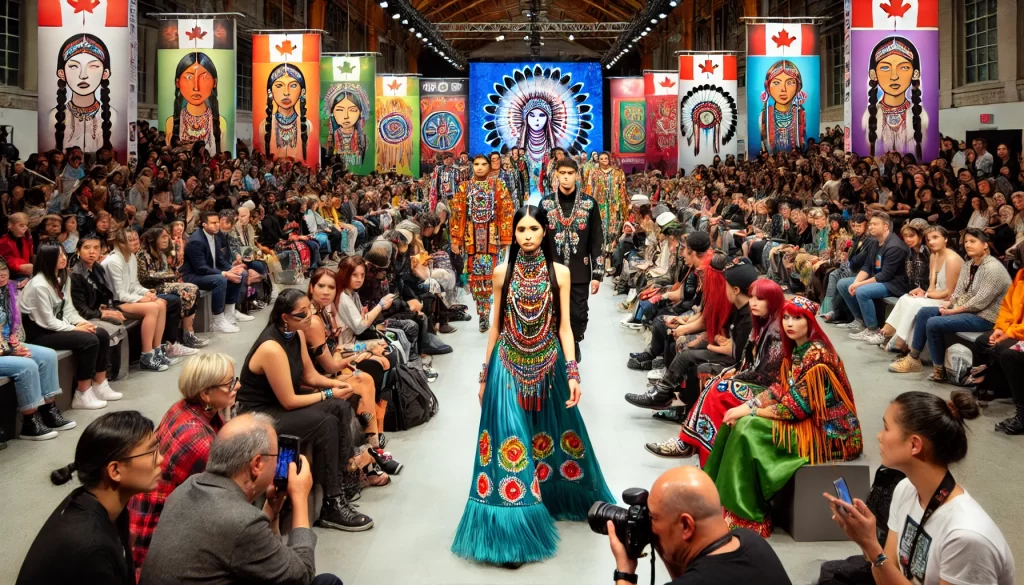
- Indigenous Fashion Week Toronto (IFWTO)
- When: Biennially in May/June
- Where: Toronto, Canada
- Description: Showcases the work of Indigenous fashion designers, models, and stylists, featuring runway shows, panel discussions, and workshops.
- Santa Fe Indian Market
- When: Annually in August
- Where: Santa Fe, New Mexico, USA
- Description: One of the largest Native American art markets, including fashion shows that highlight traditional and contemporary Indigenous fashion.
- Maori Art Market
- When: Biennially in October/November
- Where: Wellington, New Zealand
- Description: Features contemporary Maori art, including fashion shows that display traditional and modern Maori clothing and designs.
- First Nations Fashion + Design (FNFD)
- When: Various events throughout the year
- Where: Various locations in Australia
- Description: FNFD hosts several events and showcases throughout the year, promoting Indigenous Australian fashion designers.
- Native Fashion in the City
- When: Annually in March
- Where: Denver, Colorado, USA
- Description: An event that promotes Native American designers, featuring runway shows, networking opportunities, and fashion showcases.
- Western Australia Indigenous Fashion Showcase
- When: Annually, dates vary
- Where: Perth, Western Australia
- Description: Highlights the work of Indigenous fashion designers from Western Australia, showcasing a blend of traditional and contemporary styles.
- Te Atamira Māori Fashion Event
- When: Annually in September
- Where: Auckland, New Zealand
- Description: Part of the Auckland Indigenous Arts Festival, showcasing Māori fashion designers and their innovative designs.
- Red Nation Celebration Institute Native Fashion Show
- When: Annually in November
- Where: Los Angeles, California, USA
- Description: A highlight of Native American Heritage Month, featuring Indigenous designers and models.
- Pacific Fusion Fashion Show
- When: Annually in October
- Where: Auckland, New Zealand
- Description: Celebrates Pacific and Māori designers, showcasing their work in a vibrant and contemporary setting.
- Fashions of Multicultural Australia (FOMA)
- When: Annually, dates vary
- Where: Sydney, Australia
- Description: An inclusive event featuring designers from various cultural backgrounds, including Indigenous Australian designers.
- Manito Ahbee Festival
- When: Annually in May
- Where: Winnipeg, Manitoba, Canada
- Description: A celebration of Indigenous arts, culture, and music, including a fashion show that highlights Indigenous designers.
- Festival of Pacific Arts and Culture (FESTPAC)
- When: Every four years
- Where: Various Pacific nations (next in Hawaii)
- Description: A traveling festival showcasing the art, culture, and traditions of Indigenous peoples from the Pacific region, including fashion.
- Western Canada Fashion Week Indigenous Showcase
- When: Annually in September
- Where: Edmonton, Alberta, Canada
- Description: Part of the Western Canada Fashion Week, featuring Indigenous designers from across Canada.
- Melbourne Fashion Festival Indigenous Runway Project
- When: Annually in March
- Where: Melbourne, Australia
- Description: A segment of the Melbourne Fashion Festival dedicated to Indigenous designers and models, showcasing their contributions to fashion.
- Sovereign Yidindji Government Fashion Show
- When: Annually, dates vary
- Where: Cairns, Queensland, Australia
- Description: A unique event that highlights the fashion of the Sovereign Yidindji people, blending traditional and modern styles.
These events provide vital platforms for Indigenous designers to showcase their work, promote cultural heritage, and engage with global audiences. They highlight the diversity and innovation in Indigenous fashion, celebrating both traditional craftsmanship and contemporary design.
Conclusion
Traditional Indigenous clothing and design continue to have a profound influence on contemporary fashion. By incorporating cultural symbols, traditional techniques, sustainable practices, and fostering respectful collaborations, the fashion industry is enriched with the depth, beauty, and wisdom of Indigenous cultures. Recent developments and contributions from Indigenous designers and initiatives highlight the ongoing evolution and recognition of Indigenous fashion on a global scale. This ongoing influence ensures that Indigenous art and heritage remain vibrant and appreciated in modern fashion contexts.
